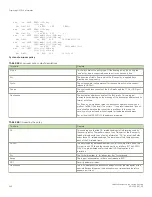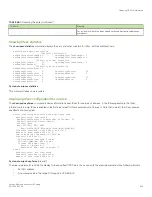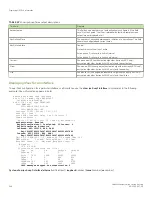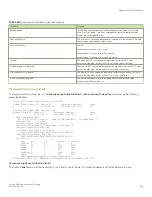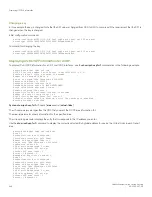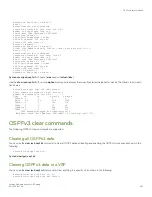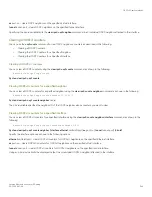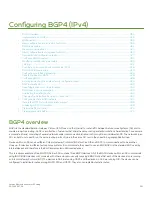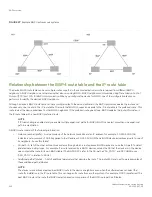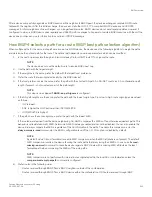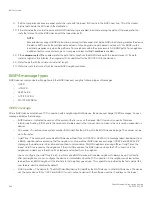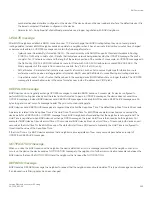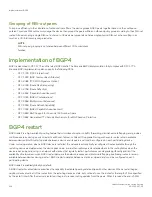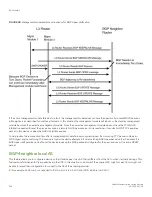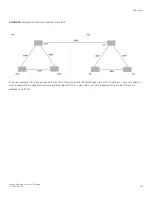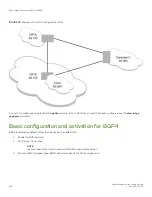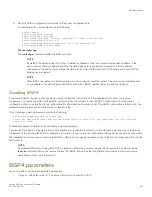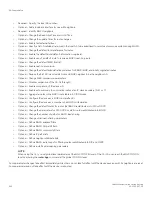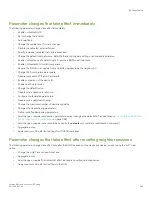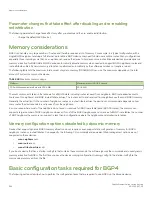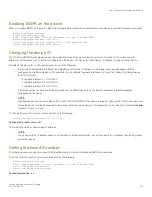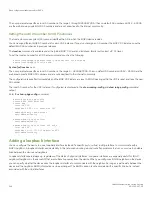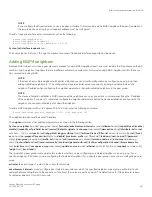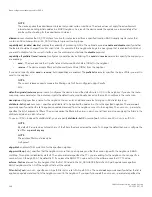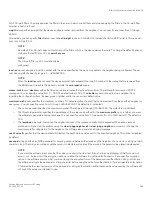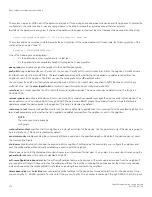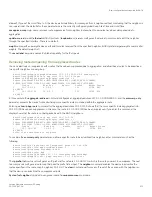
Grouping of RIB-out peers
To improve efficiency in the calculation of outbound route filters, the device groups BGP4 peers together based on their outbound
policies. To reduce RIB-out memory usage, the device then groups the peers within an outbound policy group according to their RIB-out
routes. All peers sharing a single RIB-out route (up to 32 peers per group) also share a single physical RIB-out entry, resulting in as
much as a 30-fold memory usage reduction.
NOTE
RIB-out peer grouping is not shared between different VRFs or address
families.
Implementation of BGP4
BGP4 is described in RFC 1771 and the latest BGP4 drafts. The Brocade BGP4 implementation fully complies with RFC 1771.
Brocade BGP4 implementation also supports the following RFCs:
•
RFC 1745 (OSPF Interactions)
•
RFC 1997 (BGP Communities Attributes)
•
RFC 2385 (TCP MD5 Signature Option)
•
RFC 2439 (Route Flap Dampening)
•
RFC 2796 (Route Reflection)
•
RFC 2842 (Capability Advertisement)
•
RFC 3065 (BGP4 Confederations)
•
RFC 2858 (Multiprotocol Extensions)
•
RFC 2918 (Route Refresh Capability)
•
RFC 3392 (BGP4 Capability Advertisement)
•
RFC 4893 BGP Support for Four-octet AS Number Space
•
RFC 3682 Generalized TTL Security Mechanism, for eBGP Session Protection
BGP4 restart
BGP4 restart is a high-availability routing feature that minimizes disruption in traffic forwarding, diminishes route flapping, and provides
continuous service during a system restart, switchover, failover, or hitless OS upgrade. During such events, routes remain available
between devices. BGP4 restart operates between a device and its peers, and must be configured on each participating device.
Under normal operation, when a BGP4 device is restarted, the network is automatically reconfigured. Routes available through the
restarting device are deleted when the device goes down, and are then rediscovered and added back to the routing tables when the
device is back up and running. In a network with devices that regularly restart, performance can degrade significantly and limit the
availability of network resources. BGP4 restart dampens the network response and limits route flapping by allowing routes to remain
available between devices during a restart. BGP4 restart operates between a device and peers, and must be configured on each
participating device.
BGP4 restart is enabled globally by default.
A BGP4 restart-enabled device advertises the capability to establish peering relationships with other devices. When a restart begins,
neighbor devices mark all of the routes from the restarting device as stale, but continue to use the routes for the length of time specified
by the restart timer. After the device is restarted, it begins to receive routing updates from the peers. When it receives the end-of-RIB
Implementation of BGP4
FastIron Ethernet Switch Layer 3 Routing
356
53-1003627-04
Summary of Contents for FastIron SX 1600
Page 2: ...FastIron Ethernet Switch Layer 3 Routing 2 53 1003627 04 ...
Page 16: ...FastIron Ethernet Switch Layer 3 Routing 16 53 1003627 04 ...
Page 20: ...FastIron Ethernet Switch Layer 3 Routing 20 53 1003627 04 ...
Page 142: ...FastIron Ethernet Switch Layer 3 Routing 142 53 1003627 04 ...
Page 150: ...FastIron Ethernet Switch Layer 3 Routing 150 53 1003627 04 ...
Page 200: ...FastIron Ethernet Switch Layer 3 Routing 200 53 1003627 04 ...
Page 214: ...FastIron Ethernet Switch Layer 3 Routing 214 53 1003627 04 ...
Page 350: ...FastIron Ethernet Switch Layer 3 Routing 350 53 1003627 04 ...
Page 476: ...FastIron Ethernet Switch Layer 3 Routing 476 53 1003627 04 ...
Page 588: ...FastIron Ethernet Switch Layer 3 Routing 588 53 1003627 04 ...

